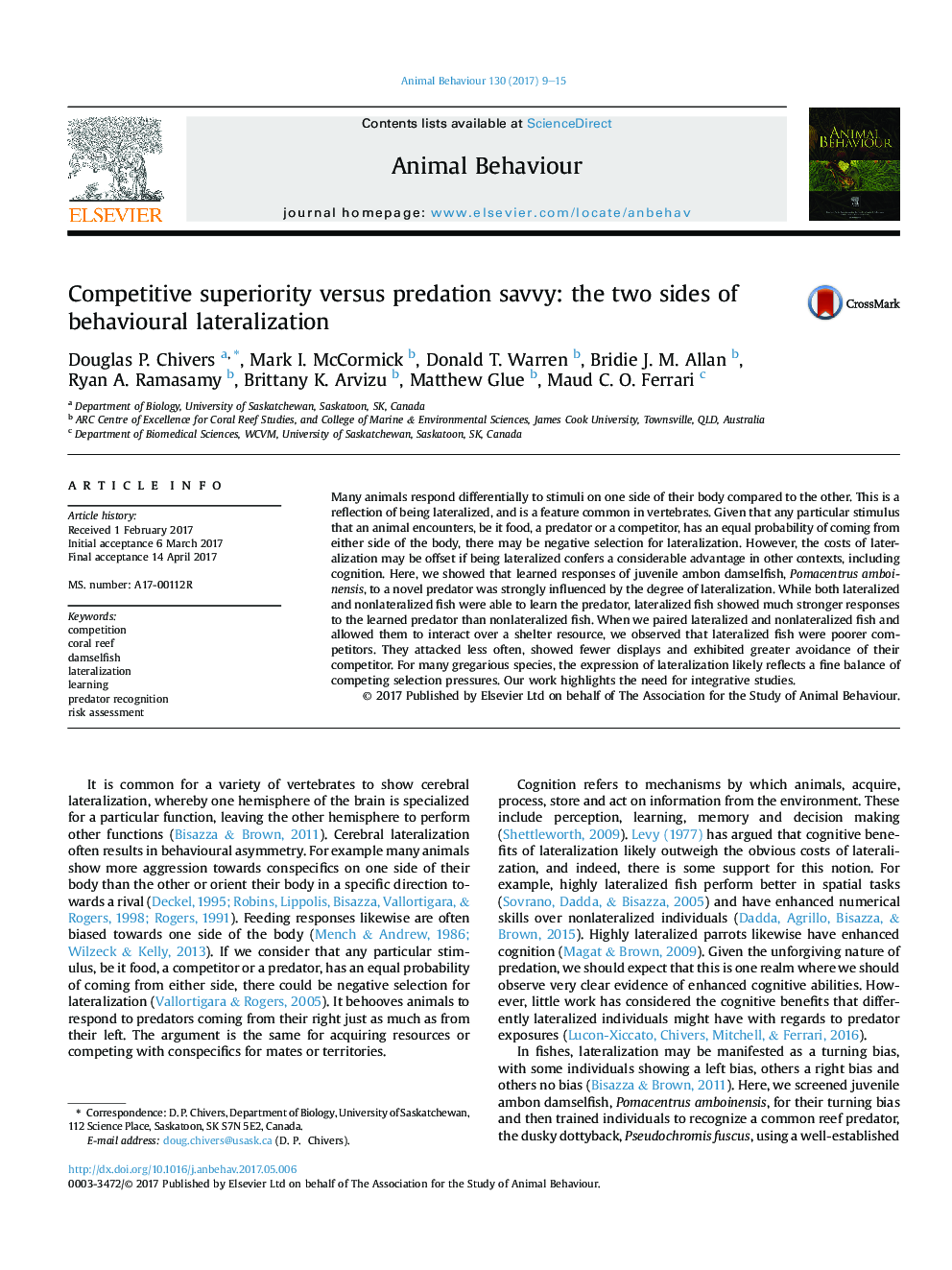| کد مقاله | کد نشریه | سال انتشار | مقاله انگلیسی | نسخه تمام متن |
|---|---|---|---|---|
| 5538401 | 1552198 | 2017 | 7 صفحه PDF | دانلود رایگان |
عنوان انگلیسی مقاله ISI
Competitive superiority versus predation savvy: the two sides of behavioural lateralization
ترجمه فارسی عنوان
برتری رقابتی در برابر سوء استفاده از شکارچیان: دو طرف از جانبداری رفتاری
دانلود مقاله + سفارش ترجمه
دانلود مقاله ISI انگلیسی
رایگان برای ایرانیان
کلمات کلیدی
موضوعات مرتبط
علوم زیستی و بیوفناوری
علوم کشاورزی و بیولوژیک
علوم دامی و جانورشناسی
چکیده انگلیسی
Many animals respond differentially to stimuli on one side of their body compared to the other. This is a reflection of being lateralized, and is a feature common in vertebrates. Given that any particular stimulus that an animal encounters, be it food, a predator or a competitor, has an equal probability of coming from either side of the body, there may be negative selection for lateralization. However, the costs of lateralization may be offset if being lateralized confers a considerable advantage in other contexts, including cognition. Here, we showed that learned responses of juvenile ambon damselfish, Pomacentrus amboinensis, to a novel predator was strongly influenced by the degree of lateralization. While both lateralized and nonlateralized fish were able to learn the predator, lateralized fish showed much stronger responses to the learned predator than nonlateralized fish. When we paired lateralized and nonlateralized fish and allowed them to interact over a shelter resource, we observed that lateralized fish were poorer competitors. They attacked less often, showed fewer displays and exhibited greater avoidance of their competitor. For many gregarious species, the expression of lateralization likely reflects a fine balance of competing selection pressures. Our work highlights the need for integrative studies.
ناشر
Database: Elsevier - ScienceDirect (ساینس دایرکت)
Journal: Animal Behaviour - Volume 130, August 2017, Pages 9-15
Journal: Animal Behaviour - Volume 130, August 2017, Pages 9-15
نویسندگان
Douglas P. Chivers, Mark I. McCormick, Donald T. Warren, Bridie J.M. Allan, Ryan A. Ramasamy, Brittany K. Arvizu, Matthew Glue, Maud C.O. Ferrari,
